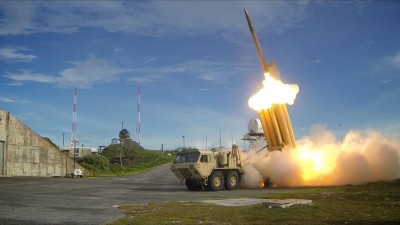Battle for India: Russia’s S-400 vs. America’s THAAD

There’s no doubt that India is one of the most geostrategically positioned countries in the world today and that its tilt one way or the other in the New Cold War could have major hemispheric reverberations for this global competition. That’s why the South Asian state has emerged as an object of intense rivalry between Russia and the US, with both Great Powers doing their utmost to get notionally “non-aligned” India to take their “side”.
The tug-of-war between the two is rapidly climaxing, however, after the US threw down the gauntlet and reportedly issued an ultimatum to India. The “Hindustan Times” published a piece headlined “US offers to sell THAAD defence system to India as alternative to Russian S-400s” detailing the offer that America made to its new “Major Defense Partner”. According to the outlet, the US is ready to impose CAATSA secondary sanctions against India if it honors its S-400 deal with Moscow, though seeing as how the country genuinely needs to procure new air defense systems, the US is willing to sell it THAADs instead.
Quite clearly, India’s choice one way or the other will greatly determine its geostrategic disposition in the New Cold War, but the odds don’t seem to be in Russia’s favor. The Stockholm International Peace Research Institute (SIPRI), the international authority on the global arms industry, reported that Russia’s arms exports to India dropped 42% between 2009-2018 and were replaced by Western wares from the US, Israel, and France instead.
Moreover, India recently agreed to abide by the US’ unilateral anti-Iranian sanctions by discontinuing its purchase of oil from the country after Washington refused to renew its previous sanctions waiver to New Delhi. This will have catastrophic consequences for Iran because it will exacerbate the economic component of the ongoing Hybrid War against it by depriving the Islamic Republic of what had hitherto been its second-largest customer, and it also strongly suggests that India might bend to America’s will on the S-400s, too.
Simply put, Indo-American trade is much larger than its Indo-Russo counterpart, so Washington naturally wields much more leverage over New Delhi than Moscow does and isn’t afraid to weaponize it in pursuit of its grand strategic ends. That’s why it looks likely that Prime Minister Modi will bow down to Trump on trade if he wins re-election, at least judging by the comments made by the US Commerce Secretary during his recent trip to the country, in which case it should be assumed to be a fait accompli that India would also submit to American pressure on its S-400 deal as well.
Should that scenario come to pass, then it would surely have consequences not only for Russia, but for the whole of Eurasia as well. It’s difficult to imagine that the US would allow India to continue with its trans-Iranian North-South Transport Corridor (NSTC) to Russia under those conditions, so threatening to impose secondary sanctions against it for non-compliance with America’s unilateral ones could deal serious economic damage to the Iranian economy if India bends on that issue too.
In addition, the US’ so-called “Indo-Pacific” concept clearly intends to use India to “contain” China, something that was noted by Russian Deputy Foreign Minister Igor Morgulov, Russian Foreign Minister Sergei Lavrov, and Sri Lankan Ambassador to Russia Dayan Jayatilleka. The US appreciates India’s stalwart refusal to join China’s Belt & Road Initiative (BRI) just as much as it does its geostrategic location as a South Asian beachhead into Eurasia, which is yet another major commonality between these two countries and further explains why New Delhi has been wandering westward over the past half-decade since the start of the New Cold War.
As such, it appears very likely that the “Battle for India” will be won by the US instead of Russia, but the New Cold War would nevertheless be far from over since Moscow can just ramp up its relations with the global pivot state of Pakistan and focus on forming the Multipolar Trilateral between it, Islamabad, and their shared strategic partners in Beijing in order to counteract the strategic gains that America might make in South Asia through India.
*
Note to readers: please click the share buttons below. Forward this article to your email lists. Crosspost on your blog site, internet forums. etc.
This article was originally published on InfoRos.
Andrew Korybko is an American Moscow-based political analyst specializing in the relationship between the US strategy in Afro-Eurasia, China’s One Belt One Road global vision of New Silk Road connectivity, and Hybrid Warfare. He is a frequent contributor to Global Research.

